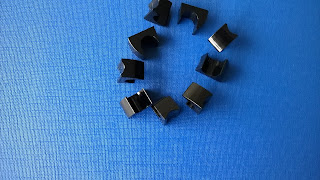Selection of Construction Materials
Precision parts There is not a great difference between
“this” steel and “that” steel; all are very similar in mechanical properties.
Selection must be made on factors such as hardenability, price, and
availability, and not with the idea that “this” steel can do something no other
can do because it contains 2 percent instead of 1 percent of a certain alloying
element, or because it has a mysterious name. A tremendous range of properties is available in any steel after
heat treatment; this is particularly true of alloy steels.
Considerations in fabrication
Precision partsThe properties of the final part
(hardness, strength, and machinability), rather than properties required by
forging, govern the selection of material. The properties required for forging
have very little relation to the final properties of the material; therefore,
not much can be done to improve its forgeability. Higher-carbon steel is
difficult to forge. Large grain size is best if subsequent heat treatment will
refine the grain size.
Low-carbon, nickel-chromium steels are just
about as plastic at high temperature under a single 520-ft·lb(1 ft·lb=1.35582J)
blow as plain steels of similar carbon content. Nickel decreases forgeability
of medium-carbon steels, but has little effect on low-carbon steels. Chromium
seems to harden steel at forging temperatures, but vanadium has no discernible
effect; neither has the method of manufacture any effect on high-carbon steel.
Formability
Precision parts The
cold-formability of steel is a function of its tensile strength combined with
ductility. The tensile strength and yield point must not be high or too much
work will be required in bending; likewise, the steel must have sufficient
ductility to flow to the required shape without cracking. The force required
depends on the yield point, because deformation starts in the plastic range
above the yield point of steel. Work-hardening also occurs here, progressively
stiffening the metal and causing difficulty, particularly in the low-carbon
steels.
It
is quite interesting in this connection to discover that deep draws can
sometimes be made in one rapid operation that could not possibly be done
leisurely(in two or three. If a
draw is half made and then stopped, it may be necessary to anneal before proceeding,
that is, if the piece is given time to work-harden. This may not be a
scientific statement, but it is actually what seems to happen.

没有评论:
发表评论